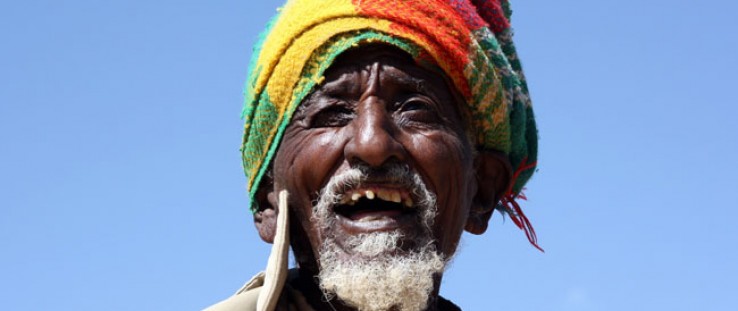 A beneficiary of the USAID-supported Productive Safety Net Program living near the Mai-Aqui site, in Tigray, Ethiopia, gushes about its success. Able-bodied beneficiaries receive food aid or cash in exchange for labor towards public works.
Nena Terrell, USAID
A beneficiary of the USAID-supported Productive Safety Net Program living near the Mai-Aqui site, in Tigray, Ethiopia, gushes about its success. Able-bodied beneficiaries receive food aid or cash in exchange for labor towards public works.
Nena Terrell, USAID
 A beneficiary of the USAID-supported Productive Safety Net Program living near the Mai-Aqui site, in Tigray, Ethiopia, gushes about its success. Able-bodied beneficiaries receive food aid or cash in exchange for labor towards public works.
Nena Terrell, USAID
A beneficiary of the USAID-supported Productive Safety Net Program living near the Mai-Aqui site, in Tigray, Ethiopia, gushes about its success. Able-bodied beneficiaries receive food aid or cash in exchange for labor towards public works.
Nena Terrell, USAID
It is December 2011, and life goes on as normal in the arid highlands of Tigray, the northern Ethiopian region whose burnt siennas, giant cactus flowers, and peaks and canyons could easily be confused with those of the American Southwest. Here, donkeys carry grain and pull packs on the side of the road. Farmers work their fields. There is no sign of a crisis.
Normality is not typically a measure of success, but in this case, and in this particular region, it is. Beginning in early 2011, a severe drought decimated parts of East Africa, leading to a June declaration of famine in parts of Somalia.
The drought was considered in some parts of the region to be one of the worst in 60 years, affecting more than 13.3 million people in the Horn of Africa. The month before the official drought declaration, USAID’s Famine Early Warning Systems Network (FEWS NET) warned: “This is the most severe food-security emergency in the world today.”
In Tigray, a region held hostage to annual alternating dry and wet seasons, the impact has been minimal. The reason, according to many who live there, is a riff on the same theme: Because of “safety net,” they say, things are OK.
“Safety net,” which several Ethiopian ethnicities know by its English term, refers to the flagship food-security program designed by the Ethiopian Government, USAID and other donors after another severe drought hit the country in 2003.
The Productive Safety Net Program (PSNP), as it is officially called, originated as part of a new approach to address chronic food shortages through scheduled food or cash transfers to chronically food-insecure populations in exchange for labor on public works projects.
“The food ensures families living on the edge are not forced to sell off their assets, mainly livestock, in order to feed their families. The labor, the quid pro quo for those fit enough to partake, is channeled into public-works projects designed to improve communities as a whole,” says Dina Esposito, director of USAID’s Office of Food for Peace.
As a result, crucial infrastructure—roads, watersheds, canals, terracing, irrigation systems, schools and health clinics—has been built or rehabilitated with the labor of the food insecure. According to USAID/Ethiopia Mission Director Tom Staal, as the program was being designed in consultations led by the Ethiopian Government, donors realized the need to not just respond to crises as they happened, but to build up resilience among the most vulnerable communities, giving them the ability to weather the inevitable dry stretches on their own.
“Before PSNP, those in chronic need were provided assistance through emergency programs,” says Scott Hocklander, chief of USAID/Ethiopia’s Office for Food Assistance and Livelihood Transitions.
“While this food aid saved lives, it did not contribute to development activities or address the root causes of food insecurity.”
Today, because of the safety net, approximately 8 million people receive assistance in a timely and predictable way.
“This All Turns Green”
In a visit to the Awda Guanga watershed site, in Tigray, Priest Berihu Gebremichael, a local beneficiary and community leader, describes a stark difference from before the PSNP came to town. “It is obvious that, before the safety net program, we had a lot of problems. I didn’t have capacity to provide my family with food,” says the 48-year-old father of two. “Before the project, we depended on rain once a year. When there was good rain, we had good income. If the rain fails, income also fails. Drought was common,” he explains. “After safety net, this all turns green,” he says, a nod to the community’s new irrigation channels and combined 235 motor pumps that draw from it.
Today, Berihu is far from the struggling subsistence farmer of years past. While he used to grow only cereals, the agricultural assistance provided by REST, or Relief Society of Tigray, the local NGO implementing the PSNP and its follow-on programs in the region, taught him how to plant correctly, how to use water better, and how to cultivate cash crops (green peppers, tomatoes, lettuce, garlic, onions and cabbage).
Instead of being forced to sell off valuable assets, he eventually multiplied them. With loan assistance also provided by the program, he bought improved seeds, a beehive, tools, fertilizer and an ox.
Berihu is now a PSNP graduate, meaning he no longer needs the monthly food or cash injections to provide for his family during the dry season. Graduation is the ultimate goal of the Productive Safety Net Program. In this sense, the safety net is merely the opening number of a two-act play: It aims to protect individual assets and create community assets so Ethiopians can then stand and prosper on their own.
Breaking the Cycle of Famine
In 2011, USAID, as the PSNP’s largest single bilateral donor, supported 2 million of the 7.4 million chronically food-insecure individuals that fall under the country’s PSNP umbrella, providing them food for three to six months in 65 districts, and also funding public work projects in 40 of these districts.
Related Content
Feed the Future
Photo Slideshow: Ethiopia in Transformation (link is external)
Lifting Livelihoods with Livestock (link is external)
USAID/Ethiopia Country Development Cooperation Strategy
The PSNP donors—a group that also includes the World Bank, the U.K. Department for International Development, the European Commission, the Canadian International Development Agency, IrishAid, the World Food Program, the Swedish International Development Cooperation Agency, and the Royal Netherlands Embassy—and the Ethiopian Government would like that number to decline as the program continues to generate sustainable improvements.
According to Staal: “The idea is that with programs like PSNP and others, we’ve made sure that people are not falling into the hole, and have some resilience so they can bounce back. But now the next step is to actually build assets and move beyond—and that means transformation.”
An early sort of transformation can be seen close to the surface in places like Awda Guanga. Berihu is old enough to remember the horrible drought of 1984, which claimed up to 1 million lives, mostly in Tigray. He says: “I remember a lot of people dying. I remember the impact on our home.”
Since 2005, the majority of the chronically food insecure have been removed from the emergency caseload in Ethiopia.
That is not necessarily the case in neighboring Somalia where no similar safety net exists due to decades of brutal conflict and a lack of governance. At the height of the 2011 crisis, more than 3.3 million Somalis were in need of lifesaving assistance. Hundreds of thousands fled their homes, and more than half of the children who arrived at refugee camps in Kenya and Ethiopia were severely malnourished.
Recent impact assessments of Ethiopia’s PSNP indicate that participating households have maintained and, in many cases, increased their household assets and are bridging the food gap. Formal assessments aside, those who have witnessed the PSNP’s impact firsthand over the past few years are the best testament to the program’s undeniable success.
“I feel like this [current] drought has illustrated just how we have broken the cycle of famine,” Staal said. “You had a drought that’s as big as any in the last 20, 30 years—maybe bigger in terms of Ethiopia—and yet there was no famine. So we’ve broken that cycle. And now we need to continue that transformation so that you’re really moving forward towards prosperity.”
Just for Grads
If the goal of the Productive Safety Net Program is to help families preserve their assets during lean times and climatic or price shocks, a USAID-funded successor program aims to diversify and multiply them, graduating people from safety-net support altogether.
The new five-year GRAD program, which stands for Graduation with Resilience to Achieve Sustainable Development, aims to help 50,000 PSNP households in Amhara, Oromiya, Tigray and SNNPR regions turn the page on food insecurity altogether by linking them up to microfinance services and functioning markets, value chains and other agricultural investments in the more productive, neighboring areas – those supported by USAID under the U.S. Feed the Future initiative.
GRAD does so through a host of resiliency and sustainability strategies such as women’s empowerment, climate change adaptation, nutrition support, and modernization of agricultural extension.
“The GRAD Project is a perfect complement to the innovative safety net program led by the Government of Ethiopia. Our additional support will strengthen the financial skills and resources of vulnerable Ethiopians and, most importantly, lift them from a life of poverty,” says USAID/Ethiopia Mission Director Tom Staal.







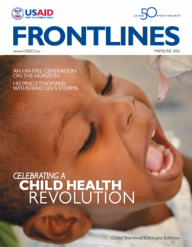

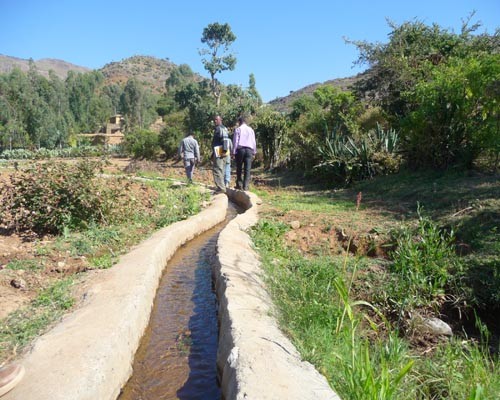
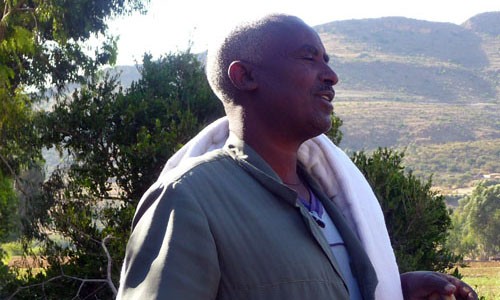
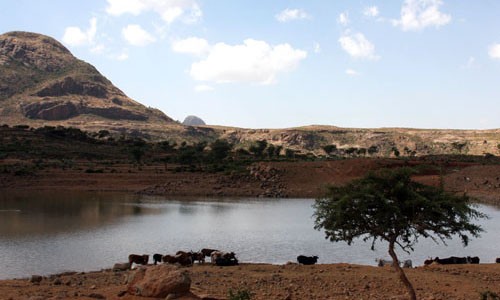
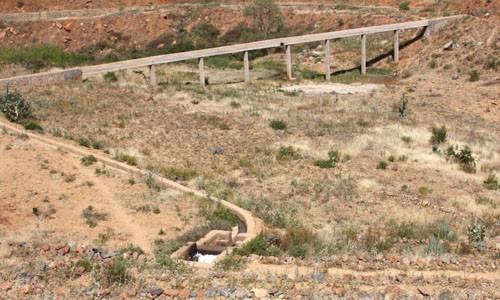
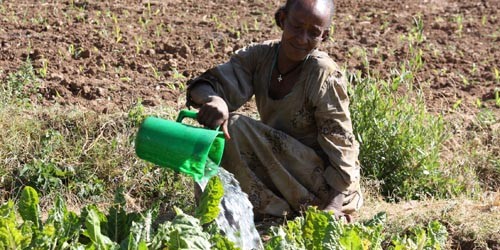
Comment
Make a general inquiry or suggest an improvement.